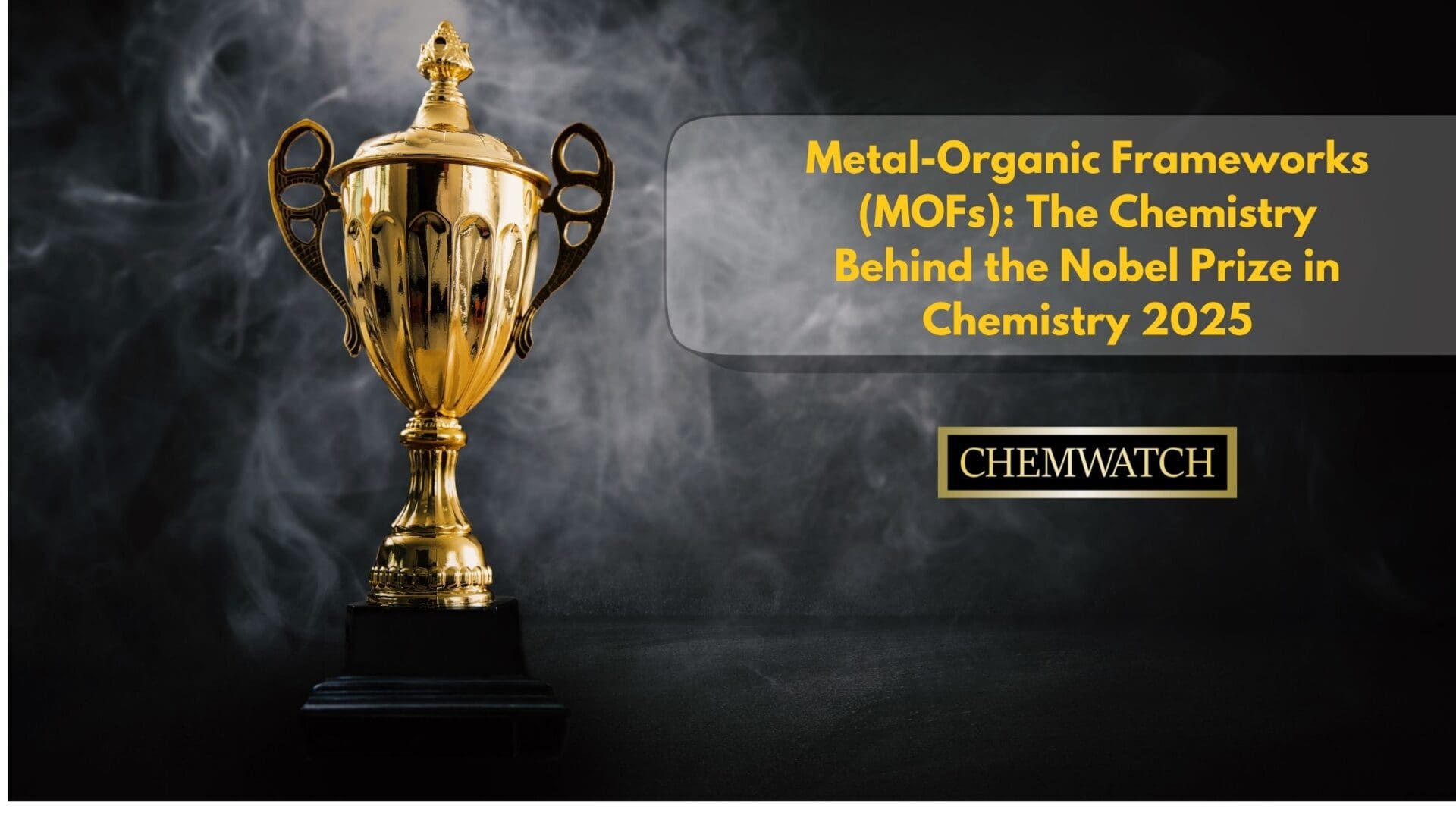
The Nobel Prize in Chemistry 2025 was awarded to Susumu Kitagawa, Richard Robson, and Omar M. Yaghi “for the development of Metal-Organic Frameworks (MOFs).” Their discoveries show how reticular chemistry- the deliberate linking of molecular building blocks- can create porous materials with vast internal surface areas and tunable function. These advances underpin promising MOF applications, from carbon capture materials to clean energy materials that support practical climate change solutions.

The conceptual roots of Metal-Organic Frameworks (MOFs) trace back to coordination polymers studied in the mid-20th century, but breakthroughs in the late 1980s and 1990s transformed fragile assemblies into robust, permanently porous networks. Richard Robson published influential early work on 3-D coordination frameworks, laying the foundation for designable architectures. In the 1990s, Omar Yaghi formalised reticular chemistry, demonstrating how strong metal–linker bonds and secondary building units (SBUs) yield stable frameworks with permanent porosity (e.g., MOF-5). Susumu Kitagawa advanced flexible and functional frameworks, widening the landscape of advanced materials research and real-world MOF applications.
Three features explain why Metal-Organic Frameworks (MOFs) earned the Nobel Prize in Chemistry 2025 and continue to drive research momentum:
The combination of high surface area and chemical tunability positions Metal-Organic Frameworks (MOFs) to address pressing challenges:
While thousands, indeed tens of thousands - of Metal-Organic Frameworks (MOFs) have been reported, only a subset meets practical criteria for long-term stability, moisture tolerance, manufacturability, and cost. Current efforts focus on scalable synthesis, solvent- and energy-lean processing, pelletisation and shaping, and integration into membranes, beds, and contactors. Lifecycle assessment and recyclability are increasingly central, ensuring MOF applications align with sustainable chemistry principles as they transition from bench to plant.
The Nobel Prize in Chemistry 2025 recognises how a conceptual advance-reticular chemistry-matured into a versatile platform for designing porous materials with predictable properties. It also highlights the sustained contributions of Susumu Kitagawa, Omar Yaghi, and Richard Robson, whose foundational ideas evolved through decades of iterative chemistry, materials engineering, computation, and collaboration. The award underscores the potential of Metal-Organic Frameworks (MOFs) to deliver impactful MOF applications in carbon capture materials, clean fuels, and resilient water systems.
The future of Metal-Organic Frameworks (MOFs) is deeply interdisciplinary. AI-driven discovery, high-throughput screening, and data-centric design are accelerating candidate selection; hybrid systems (MOF- polymer membranes, MOF–catalyst composites) expand performance envelopes; and field trials will clarify durability and economics. As scale-up and stability hurdles are overcome, MOF applications may shift from pilot demonstrations to mainstream deployments in gas storage, hydrogen storage, water harvesting, and emissions control-delivering tangible climate change solutions anchored in rigorous advanced materials research.
How Chemwatch Can Help?
Chemwatch supports organisations translating advanced materials research into safe, compliant products. Our platform delivers up-to-date safety data sheets (SDS), global regulatory monitoring, and label generation for metal salts, linkers, solvents, and finished Metal-Organic Frameworks (MOFs). Chemwatch streamlines chemical governance so your scientists can focus on innovation.
Sources